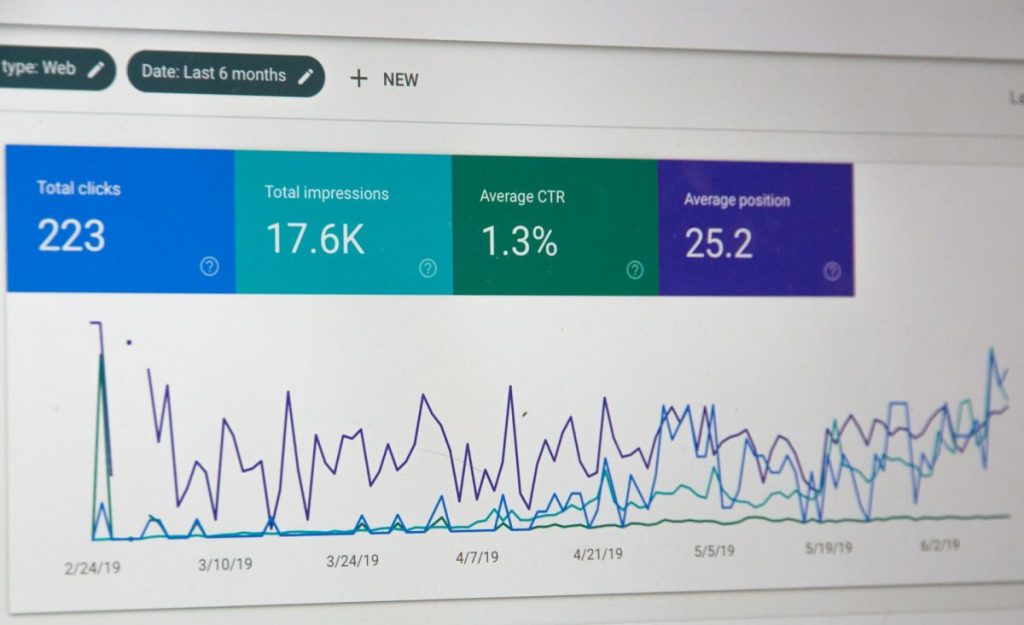Welcome to the world of SEO automation!
Imagine if your blog posts could almost write themselves, freeing you from the boring tasks of optimizing content for search engines.
Sounds amazing, right?
Well, it’s not only possible, but it’s also easier than you might think. In this guide, I’ll explain what SEO automation is, how it can benefit your blog, and introduce you to a fantastic tool called ArticleX.
What is SEO Automation?
SEO automation uses tools to handle the tasks that help your website rank better in search engines.
Instead of spending hours manually checking keywords, optimizing meta descriptions, or analyzing performance data, SEO automation can do it for you.
This means you can focus more on creating great content and less on the nitty-gritty details of SEO.

How SEO Automation Can Benefit Your Blog
Let’s dive into the key benefits of SEO automation and how they can make your blogging life easier.
1. Automated Content Creation
SEO automation tools can help you find the best keywords for your content.
They analyze search trends and competition, matching you with the most relevant keywords to target.
This makes sure your content is optimized from the start, helping you rank higher in search results.
2. Automated On-Page Optimization
On-page SEO involves optimizing individual pages to rank higher.
This includes meta descriptions, title tags, and header tags. With SEO automation, these elements are automatically optimized, ensuring each post is perfectly tuned for search engines without any manual effort.
3. Content Performance Analysis
Monitoring how your blog posts perform is crucial for improving your content strategy.
SEO automation tools provide detailed analytics, showing you which posts perform well and which ones need improvement. This data-driven approach helps you make better decisions for your blog.
4. Consistent Updates
Search engine algorithms change often, which means your SEO strategy needs to adapt.
SEO automation tools stay updated with the latest trends and changes, ensuring your blog remains optimized as search engines evolve.
SEO Automation With ArticleX
Now that you understand the basics of SEO automation, let me introduce you to ArticleX.
ArticleX takes SEO automation to the next level by simplifying the entire content creation process.
With ArticleX, you can generate high-quality blog posts quickly and efficiently.

Step-by-Step with ArticleX
Enter Your Topic:
Start by entering the URL from your YouTube, Instagram, TikTok, podcast, or other content sources.
Write and Optimize:
Based on your input, ArticleX creates a detailed article, ensuring it covers all the essential points from your content.
Publish with Confidence:
Once your post is ready, you can publish it directly to your blog from ArticleX, knowing it’s fully optimized for search engines.
By integrating SEO automation into your content strategy with tools like ArticleX, your blog can rank higher on Google and attract more readers/customers.
Whether you’re a longtime blogger or just starting, SEO automation can help you create better content faster and more efficiently.
The Role of New AI Assistants from the Latest AI LLMs
Introduction to AI Language Models
The rise of large language models (LLMs) from AI giants like OpenAI and Google has changed the world of content creation.
These AI assistants are capable of generating high-quality content for your blogs.
However, while they can produce impressive content, they might not always have the best SEO in mind and can sometimes harm your website if detected by Google.
But don’t worry, the content they generate can be edited and optimized for SEO.
Capabilities of AI Language Models
1. High-Quality Content Generation
AI language models are designed to understand and generate human-like text.
They can create content that is coherent, well-structured, and relevant to your audience.
Whether you need a detailed blog post, a creative article, or an informative guide, these AI assistants can deliver high-quality content that meets your standards.
Example:
Imagine you want to write a blog post about the benefits of SEO automation.
By providing a simple prompt, an AI assistant can generate a comprehensive and engaging post, complete with relevant examples and SEO optimization tips.
2. SEO Optimization Needs Editing
While AI language models can generate great content, they don’t always get the SEO part right.
You need to edit the content to make sure it’s SEO-friendly.
This involves checking keyword placement, optimizing meta descriptions, and making sure the content flows naturally.
ChatGPT for SEO: 11 best and worst use cases 🤖
We’ve done the work so you don’t have to!
Let’s take a closer look—plus, some tactics and prompts to improve SEO for your website ⛏️
H/T: @samsgoh pic.twitter.com/vklQfL7LiA
— Ahrefs (@ahrefs) February 17, 2023
Steps for Editing AI-Generated Content:
Read Through the Content:
Make sure it makes sense and flows well. Look out for any awkward phrasing or errors.
Check for Keyword Placement:
Make sure the main keywords are used naturally throughout the content.
Optimize Meta Descriptions:
Write compelling meta descriptions that include your main keywords.
Add Internal Links:
Connect the new post with relevant existing content on your blog.

3. Customization and Personalization
AI language models can be customized to match your blog’s style and tone.
You can set preferences for the writing style, tone, and formatting to ensure the generated content aligns with your brand.
This level of customization guarantees consistency across all your blog posts.
Steps for Customization:
Define Your Style:
Choose your preferred writing style and tone.
Set Formatting Rules:
Specify how you want the content to be structured, including headings, bullet points, and paragraph lengths.
Input Preferences:
Enter these preferences into the AI assistant, which will then generate content that matches your specifications.
Future of AI-Assisted Content Creation

As AI language models continue to evolve, their capabilities will only get better.
Future developments could include even more advanced SEO features, deeper customization options, and better integration with other digital marketing tools.
Staying ahead of these trends will give your blog a competitive edge.
Embracing new technologies and adapting to changes in the SEO landscape will ensure your content remains relevant and effective.
The Power of Autoblogging
What is Autoblogging?
You might be wondering, what is autoblogging?
Autoblogging is a method where blog posts are created automatically using AI.
Instead of writing each post yourself, tools like ArticleX can generate content based on your social media content and include keywords, topics, or sources you choose.
Benefits of Autoblogging
1. Consistent Content Updates
One of the biggest advantages of autoblogging is the consistency it brings.
Keeping a blog updated with new posts regularly can be challenging, especially if you’re struggling to keep up with making other content.
With autoblogging, you can ensure your blog is always active and up-to-date.
You can generate and publish posts on a schedule you set, so your readers always have something new to read.
2. Improved SEO
Regular updates are essential for good SEO.
Search engines love fresh content, and a consistently updated blog is more likely to rank higher in search results.
Autoblogging helps by continually adding new posts to your blog, which can improve your SEO over time. Each new post is another opportunity to rank for different keywords and attract more visitors.
3. Increased Traffic
With improved SEO comes increased traffic.
As your blog starts to rank higher for various keywords, more people will find your site through search engines.
Plus, with a steady stream of new content, your readers will have more reasons to visit your blog regularly.
This can lead to more page views, more engagement, and ultimately, more success for your blog.
How ArticleX Enhances Autoblogging
Now, let’s talk about how ArticleX can make autoblogging even easier. ArticleX is designed to simplify the entire process of autoblogging, making it accessible even if you’re not tech-savvy.
Setting up autoblogging with ArticleX is straightforward. Here’s how you can do it step by step:
1. Grab Your Content’s URL: Find the URL of the content you want to repurpose, whether it’s a YouTube video, an Instagram Reel, a podcast episode, or another type of content.
2. Paste the URL into ArticleX: Go to the ArticleX platform and paste the URL into the designated input field.
3. Automatic Content Pull: ArticleX will automatically pull in content from the specified URL, generating high-quality blog posts.
4. Review and Edit (if needed): While ArticleX does a great job, it’s always a good idea to review and edit the content to ensure it meets your standards and is optimized for SEO.
5. Publish: Once everything looks good, let ArticleX publish the posts to your blog according to your settings.
This hands-off approach saves you time and effort, allowing you to focus on other aspects of your content creation.
Creative Content Automation Strategies
Using YouTube Videos
Repurposing YouTube videos into blog posts is a great way to make the most out of your existing content. Here’s how you can do it using SEO automation.
Step-by-Step Guide Using ArticleX to Convert Video Content:
Select Your Video:
Choose a YouTube video that you want to turn into a blog post. Make sure it’s relevant and informative.
Upload the Video URL:
Paste the URL of the YouTube video into ArticleX. The platform will automatically start processing the video.
Extract Key Points:
ArticleX will analyze the video and extract the main points, including key topics, quotes, and important information.
Generate a Draft:
ArticleX creates a draft blog post based on the extracted points. The draft will be engaging and SEO-optimized.
Edit and Enhance:
Review the draft and add any additional information or personal touches. ArticleX allows you to tweak the content to match your style.
Publish:
Once you’re satisfied with the post, you can publish it directly from ArticleX.
Instagram Reels
Short-form video content like Instagram Reels can also be repurposed for your blog. Here’s how to do it effortlessly with SEO automation using ArticleX.
Step-by-Step Guide Using ArticleX to Convert Instagram Reels:
Choose a Reel:
Pick an Instagram Reel that aligns with your blog’s niche.
Upload the Reel URL:
Paste the URL of the Instagram Reel into ArticleX. The platform will automatically start processing the video.
Extract Highlights:
ArticleX will help extract the key highlights from the Reel, focusing on the most engaging parts.
Generate a Draft:
ArticleX creates a draft blog post based on these highlights, ensuring it’s optimized for SEO.
Review and Enhance:
Review the draft and make any necessary edits or add personal touches. ArticleX allows you to tweak the content to match your style.
Publish:
Once you’re satisfied with the post, you can publish it directly from ArticleX.
Transforming Podcast Episodes into Blog Articles

Podcasts are another excellent source of content for your blog. Transforming podcast episodes into engaging blog articles is simple with SEO automation using ArticleX.
Step-by-Step Guide Using ArticleX to Convert Podcast Episodes:
Select an Episode:
Choose a podcast episode with valuable content that aligns with your blog’s niche.
Upload the Podcast Audio:
Paste the URL of the podcast episode into ArticleX, or upload the audio file directly.
Transcribe the Audio:
ArticleX will transcribe the podcast audio into text, providing a written version of the episode.
Identify Key Segments:
The tool will help you pinpoint the key segments and topics discussed in the episode, highlighting the most important points.
Generate a Blog Post:
ArticleX will create a draft blog post from the transcription, focusing on the key segments and ensuring the content is optimized for SEO.
Review and Enhance:
Review the draft, make any necessary adjustments, and add personal touches. ArticleX allows you to tweak the content to match your style.
Publish:
Once you’re satisfied with the post, you can publish it directly from ArticleX.
Other Content Types
You can also repurpose other types of content, such as webinars, whitepapers, and social media posts. Here are some ideas and how ArticleX can help.
Ideas for Repurposing Webinars, Whitepapers, and Social Media Posts:
Webinars:
Turn your webinars into detailed blog posts. ArticleX can extract the main points and create a comprehensive post.
Whitepapers:
Use the insights and data from your whitepapers to generate informative blog content.
Social Media Posts:
Compile your best social media updates into a blog post. ArticleX can help you organize and optimize the content.
ArticleX Integration for Various Content Types:
Upload Your Content:
Upload your webinars, whitepapers, or social media posts into ArticleX.
Automated Analysis:
The tool will analyze the content and extract the key points.
Generate Posts:
ArticleX will create SEO-optimized blog posts from the extracted information.
Review and Publish:
Edit the posts as needed and publish them on your blog.

By using SEO automation and ArticleX, you can easily repurpose different types of content into engaging blog posts.
This not only saves time but also ensures your blog stays updated with fresh and relevant content.
In the next section, we’ll learn how to implement SEO automation into your blog.
Implementing ArticleX for Your Blog
Getting Started with ArticleX
Setting up ArticleX on your website is a simple process. Here’s a step-by-step guide to get you started.
1. Sign Up and Install
First, sign up for an ArticleX account.
Once you’ve registered, you’ll need to install the ArticleX plugin on your website.
If you’re using a platform like WordPress, this process is straightforward. Just go to your plugin section, search for ArticleX, and click “Install.” Then, activate the plugin.
2. Connect Your Blog
After installation, connect ArticleX to your blog.
You’ll need to enter some basic information like your blog’s URL and your account credentials. This allows ArticleX to access your blog and start automating content.
3. Input Content URLs
Next, input the URLs of the content you want to automate.
This could be your YouTube videos, Instagram Reels, podcast episodes, or other content types.
Simply paste the URLs into the designated section in ArticleX. The tool will then analyze these URLs and prepare to generate blog posts based on the content.
Customization Options
One of the best things about ArticleX is how customizable it is. You can tailor the output to fit your blog’s style and tone.
Setting Your Style
Every blog has its unique voice, and ArticleX allows you to maintain that.
You can customize the writing style, tone, and format of the generated content. Whether you prefer a casual tone or a more professional one, ArticleX can adapt to your needs.
Step-by-Step Customization:
Choose Your Style:
In the settings, you can select from different writing styles. For example, you might choose a friendly and conversational style or a more formal tone.
Set the Tone:
Decide if you want the content to be humorous, serious, or somewhere in between. This ensures the generated posts align with your blog’s personality.
Format Preferences:
Customize how the posts are formatted. This includes headings, bullet points, and paragraph lengths. You can also set preferences for images and multimedia integration.
Case Studies
To show you the power of ArticleX, here are a few case studies from users who have benefited from SEO automation.
DevX & ArticleX
Tech Trends Blog struggled to keep up with the demand for fresh content. By implementing ArticleX, they were able to automate the creation of blog posts from their YouTube channel. This not only saved them hours of work each week but also significantly increased their organic traffic. The SEO optimization features ensured each post was perfectly aligned with their target keywords, boosting their search engine rankings.
Testimonial:
“ArticleX has changed our content creation process. It’s fast, efficient, and the results are great. We’ve reduced our writing cost by 70%, saving us $2,100 monthly.”
Calendar.com & ArticleX
Healthy Living Podcast wanted to reach a broader audience by transforming their episodes into blog posts. ArticleX made this process seamless. The tool transcribed the podcast audio and generated engaging articles that were optimized for SEO. This helped them attract new readers who preferred reading over listening.
Best Practices for SEO Automation
Maintaining Content Quality
SEO automation is a powerful tool, but it’s important to ensure the content generated is of high quality.
Here are some tips to help you maintain top-notch content standards.
1. Set Clear Guidelines
Before automating your content, set clear guidelines for tone, style, and format.
This ensures that the generated content aligns with your blog’s voice and meets your readers’ expectations.
2. Regular Review and Editing
Even though automation saves time, it’s crucial to review and edit the content before publishing.
Here’s a step-by-step guide:
Read Through the Content:
Ensure it makes sense and flows well. Look out for any awkward phrasing or errors.
Check for Accuracy:
Verify facts, statistics, and any information presented.
Enhance with Personal Touches:
Add personal insights or examples to make the content more engaging.
Proofread:
Correct any grammar or spelling mistakes.
3. Use High-Quality Sources
When repurposing content from other mediums (like YouTube videos or podcasts), ensure the original source is high quality.
SEO Optimization Tips
Effective SEO is crucial for driving traffic to your blog. Here are some tips for optimizing your automated content.

1. Keyword Integration
Proper keyword integration is key to SEO success.
With ArticleX, you can ensure your content is optimized for the right keywords.
Steps for Keyword Integration:
Identify Keywords:
Use SEO tools to find relevant keywords for your topic.
Input Keywords into ArticleX:
Ensure the tool integrates these keywords naturally throughout the content.
Use Keywords in Headers:
Place keywords in titles and subheadings to improve search engine visibility.
2. Optimize Meta Descriptions
Meta descriptions are necessary for SEO.
They give a brief overview of your post and appear in search engine results.
Creating Effective Meta Descriptions:
- Keep It Short: Meta descriptions should be around 150-160 characters.
- Include Keywords: Use your main keyword in the description.
- Make It Compelling: Write a description that encourages people to click on your link.
Utilize ArticleX for SEO-Friendly Content
ArticleX helps you automate SEO optimization. Here’s how:
- Automated Keyword Placement: ArticleX places keywords strategically in your content.
- SEO Checklists: The tool provides a checklist to ensure all SEO elements are covered.
- Internal Linking: ArticleX can automate internal linking, connecting new posts to relevant existing content.
Monitoring and Analytics
Tracking the performance of your automated content is crucial to understand what’s working and what needs improvement.
1. Use Analytics Tools
Use tools like Google Analytics to monitor your content’s performance. Look for metrics like page views, bounce rates, and average time on page.
Steps for Tracking Performance:
Set Up Analytics:
Ensure you have analytics tools set up on your website.
Monitor Key Metrics:
Track metrics that matter to your blog’s success.
Analyze Trends:
Look for trends over time to understand how your content is performing.
2. Adjust Strategies Based on Analytics
Use the insights from your analytics to refine your content strategy.
Steps for Adjusting Strategies:
Identify Top-Performing Content:
Find out which posts are performing best and why.
Refine Keyword Strategy:
Adjust your keywords based on what’s bringing in traffic.
Improve Underperforming Posts:
Tweak posts that aren’t doing well to improve their performance.
Regularly Update Content SEO is not a one-time task.
Regularly updating your content helps maintain its relevance and effectiveness.
Steps for Updating Content:
Review Old Posts:
Check older posts for outdated information.
Add New Insights:
Update posts with new information or insights.
Refresh SEO Elements:
Ensure the SEO elements like keywords and meta descriptions are up-to-date.
By following these best practices, you can ensure your SEO automation efforts result in high-quality, SEO-optimized content that drives traffic to your blog.
ArticleX makes this process easier, allowing you to focus on creating great content while the tool handles the technical aspects.
Recap
In this article, we’ve explored the transformative power of SEO automation and autoblogging. By leveraging these tools, you can save time, maintain consistent content updates, and significantly improve your SEO performance.
We’ve seen how ArticleX simplifies the process, turning YouTube videos, Instagram Reels, podcasts, and other content types into engaging, SEO-friendly blog posts.
The benefits are clear: more traffic, better search engine rankings, and a more efficient workflow.
Now that you understand the power of SEO automation, why not give ArticleX a try?
Whether you’re a seasoned blogger or just starting, ArticleX can help you automate your content creation process, ensuring high-quality, optimized posts with minimal effort.
Don’t miss out on the opportunity to take your blog to the next level. Try ArticleX today and see the difference it can make.
Future Trends
The future of SEO automation is bright and full of potential.
As technology advances, we can expect even more sophisticated tools and features that will make content automation smarter and more intuitive.
Staying ahead of these trends will give your blog a competitive edge.
Embracing new technologies and adapting to changes in the SEO landscape will ensure your content remains relevant and effective.
Additional Resources
To help you get started and make the most of ArticleX, here are some additional resources:
Links to Tutorials:
- Getting Started with ArticleX
- How to Optimize Your Blog Posts with ArticleX
- Using ArticleX to Automate Your Content Creation
Customer Support:
- For any questions or assistance, visit our Customer Support Page.
- You can also reach out to our support team via email at [email protected].
Further Reading:
- SEO for Beginners by John Jantsch
- Content Marketing Strategy by Robert Rose
- The Ultimate Guide to SEO – Forbes
Sources:
- Ahrefs. “SEO Guides & Resources.” https://ahrefs.com/blog/seo/
- Moz. “Beginner’s Guide to SEO.” https://moz.com/beginners-guide-to-seo
- Search Engine Journal. “SEO Automation: Trends and Tools.” https://www.searchenginejournal.com/seo-automation-trends-tools/
- Neil Patel. “SEO Tips and Tools for Better Website Performance.” https://neilpatel.com/blog/seo-tools/
- Berkeley Boot Camps. “8 Business-Boosting Benefits of SEO.” UC Berkeley Extension. https://bootcamp.berkeley.edu/blog/benefits-of-seo/
- Columbia University School of Professional Studies. “SEM: Tips, Benefits, & How It Relates to SEO.” Career Design Lab. https://careerdesignlab.sps.columbia.edu/blog/sem-tips-benefits-how-it-relates-to-seo/
- University of Washington Professional & Continuing Education. “Specialization in Search Engine Optimization (SEO).” https://www.pce.uw.edu/courses/search-engine-optimization
- Michigan Technological University. “Five Ways to Improve Your Site’s Ranking (SEO).” https://www.mtu.edu/umc/services/websites/seo/
- Penn State University. “4 Benefits of Hiring an SEO Agency.” Social Trends Blog. https://sites.psu.edu/socialtrends/2023/04/10/4-benefits-of-hiring-an-seo-agency/
- Ahrefs. “SEO Automation: 9 Tasks That Save You Time & Money.” https://ahrefs.com/blog/seo-automation-tasks/
- Ahrefs. “What Are the Benefits of SEO? (And How to Get Started).” https://ahrefs.com/blog/benefits-of-seo/
- Ahrefs. “Steal Our SEO API Stack For Easy SEO Automation.” https://ahrefs.com/blog/seo-api-stack/
- Ahrefs. “Why SEO Is Important: 8 Reasons (And How to Get Started).” https://ahrefs.com/blog/why-seo-is-important/
- Ahrefs. “Automated SEO Reporting (The Easy Way).” https://ahrefs.com/blog/automated-seo-reporting/
- Wharton University of Pennsylvania. “Digital Versus Traditional Marketing: What Today’s C-Suite Needs to Know.” https://online.wharton.upenn.edu/blog/digital-versus-traditional-marketing/
FAQ: SEO Automation
What is SEO automation?
SEO automation uses software tools to manage and optimize various search engine optimization tasks. These tools handle tasks like keyword research, on-page optimization, and performance analysis, allowing you to focus more on creating quality content.
How does SEO automation work?
SEO automation works by using algorithms and data analysis to perform tasks that would typically require manual effort. For example, it can automatically optimize your blog posts for keywords, update meta descriptions, and analyze the performance of your content.
Why should I use SEO automation?
Using SEO automation can save you time and improve the effectiveness of your SEO strategy. It helps ensure your content is always optimized for search engines, which can lead to higher rankings, more traffic, and better overall performance of your blog.
Can SEO automation tools create content for me?
Yes, some SEO automation tools, like ArticleX, can help generate content based on your input. They can transform videos, podcasts, and social media posts into fully optimized blog posts, making the content creation process much faster and more efficient.
Is SEO automation suitable for all types of blogs?
SEO automation can benefit any type of blog, whether it’s personal, business, or niche-specific. By automating SEO tasks, you ensure your content is optimized, which is essential for attracting and retaining readers.
How do I get started with SEO automation?
To get started with SEO automation, you can choose a tool like ArticleX. Sign up for an account, connect your blog, and start inputting your content URLs. The tool will then automate the optimization process, helping you create and publish SEO-friendly content.
Will SEO automation tools keep up with changes in search engine algorithms?
Yes, good SEO automation tools are designed to stay updated with the latest search engine algorithm changes. This means your blog will remain optimized even as search engines evolve.
Do I still need to review content generated by SEO automation tools?
While SEO automation tools can generate high-quality content, it’s always a good idea to review and edit the content before publishing. This ensures the content meets your standards and aligns with your blog’s voice and style.
How can I measure the success of my SEO automation efforts?
You can measure the success of your SEO automation efforts by tracking key metrics such as organic traffic, search engine rankings, page views, and engagement rates. Most SEO automation tools provide detailed analytics to help you monitor and analyze your blog’s performance.
Can SEO automation tools handle different types of content?
Yes, SEO automation tools like ArticleX can handle various types of content, including blog posts, videos, podcasts, and social media updates. They can repurpose this content into SEO-optimized blog posts, ensuring your blog remains updated with fresh and relevant content.














